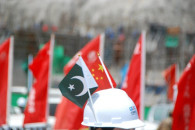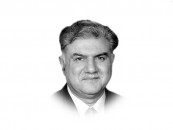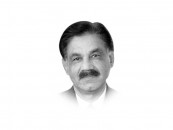Pakistan’s grooming market sees reset as Gillette exits, new trends emerge
Treet Corporation expands product line to cater to evolving Gen Z preferences, underserved women’s grooming market

In a rare development for the personal-care market, the country is witnessing what industry experts describe as a reset moment. For years, the shaving and grooming sector has revolved around a few dominant players, with consumers largely accustomed to imported brands.
But with Gillette’s exit from formal local operations and a rapidly shifting buyer profile shaped by Gen Z, the competitive landscape is undergoing a dramatic transition, one that companies say they had already been preparing for.
“The preparations and additions in our product line did not happen overnight. Our expansion was planned for more than two years, long before Gillette’s departure,” said Syed Sheharyar Ali, Chief Executive Officer of Treet Corporation, in an interview with The Express Tribune. “Their exit may create a gap, but for us, it is simply accelerating a direction we were already heading toward.”
The company, one of Pakistan’s oldest names in blades and razors, believes that the country’s grooming market is far more complex than traditional data suggests. Unlike global markets where men account for the majority of razor consumption, Pakistan’s evolving demographics and cultural shifts are opening new lanes, particularly in the women’s grooming category, which remains severely underserved.
“For a while, we were present in women’s razors, but the market was practically empty,” Ali said. “There is no major player covering it seriously. Pricing was a big issue in that category. We will now enter it with new technologies and a proper system range.”
The company is preparing a massive rollout of more than 35 new shaving and grooming products by January 2026, under what Ali calls a ‘house of brands’ model. Instead of stretching the name across every innovation, the corporation will introduce standalone brands, including premium men’s and women’s systems built with 3-blade to 5-blade formats, shaving gels, face washes, and high-end foams.
“We have our own identity, but it is not a high-end brand, and we don’t want to change that,” Ali said. “The future belongs to exclusive system brands. People need options, for too long, they had just one.”
Market experts say Pakistan’s grooming industry is still in the early stages of premiumisation. While the disposable razor remains the highest-selling format nationwide — largely due to affordability and availability through kiryanas — consumer behaviour is shifting. Gen Z buyers, aged 15 to 20, now expect modern grooming solutions, online ordering convenience, and global-standard product quality.
“We are improving our online presence because the new generation decides differently. They are the ones who will make these products part of their everyday routine,” he said.
However, despite all opportunities, challenges remain significant. The CEO warns that the grey channel continues to distort competition, especially with smuggled Indian and regional products making their way into markets without duties or compliance.
“Grey products are the biggest issue. We pay taxes; many of these competitors do not, yet their profits soar. There is a need for proper government support to end this grey channel through consistent policies and strict monitoring. This is essential for legitimate businesses to grow,” Ali added.
On the export front, the company maintains a unique position. While Pakistan struggles to compete with China in most manufactured categories, razors are one of the few exceptions. “China’s quality in razors is not superior to ours,” Ali claimed. “That is why China itself is one of our biggest export markets, followed by the GCC and Saudi Arabia.”
Previously, exports, which made up 34% of the company’s razor revenue share in FY22, have now narrowed to around 22% in FY25 due to pricing adjustments and shifting global demand patterns. Still, Ali believes that Pakistan holds a natural advantage in this product line, one that can be scaled further with global-standard branding and upgraded manufacturing.
The management, on the backdrop of increasing domestic and global demand, is planning to expand its production capacity next year. Its current facilities are operating at nearly 90-100% utilisation, leaving little room for aggressive new launches without infrastructure upgrades.
“This is the start of a new chapter. We are moving toward high-end systems, better technology, and millennial-focused products. Our target is simple, to become a household name at every level,” Ali said. “We want to offer quality, even at a premium price, but we also want to compete fairly. This market has space, enough for new brands, new systems, and new ideas. It just needs consistency.”



















COMMENTS (1)
Comments are moderated and generally will be posted if they are on-topic and not abusive.
For more information, please see our Comments FAQ